Inspirational women from history: Amelia King, a Black Land Girl during World War 2
6-7 minute read
By Ellie Ayton | March 12, 2024
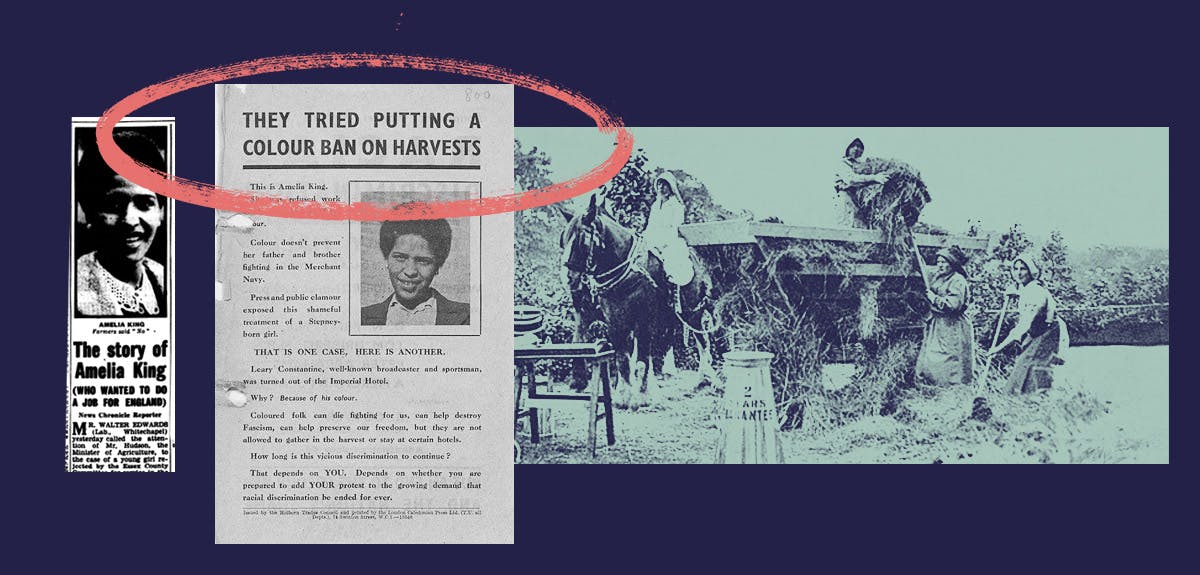
Discover the story of Amelia King, who was one of the first Black women to join the Women's Land Army during the Second World War.
As World War 2 raged, many women across Britain were keen to play their part in the war effort. But London-born Amelia King did not expect to be prevented from joining the Women’s Land Army simply because of the colour of her skin.
This is her story.
Findmypast is on a mission to tell the stories of women who have been lost to history, from activists to astronomers.
Who was Amelia King?
Amelia Elizabeth King was born in Limehouse in the East End of London on 25 June 1917. Her father was Henry King, who was born in Georgetown, Guiana. He was a stoker in the Merchant Navy, who saw service in two wars. Her brother Fitzherbert was in the Royal Navy.
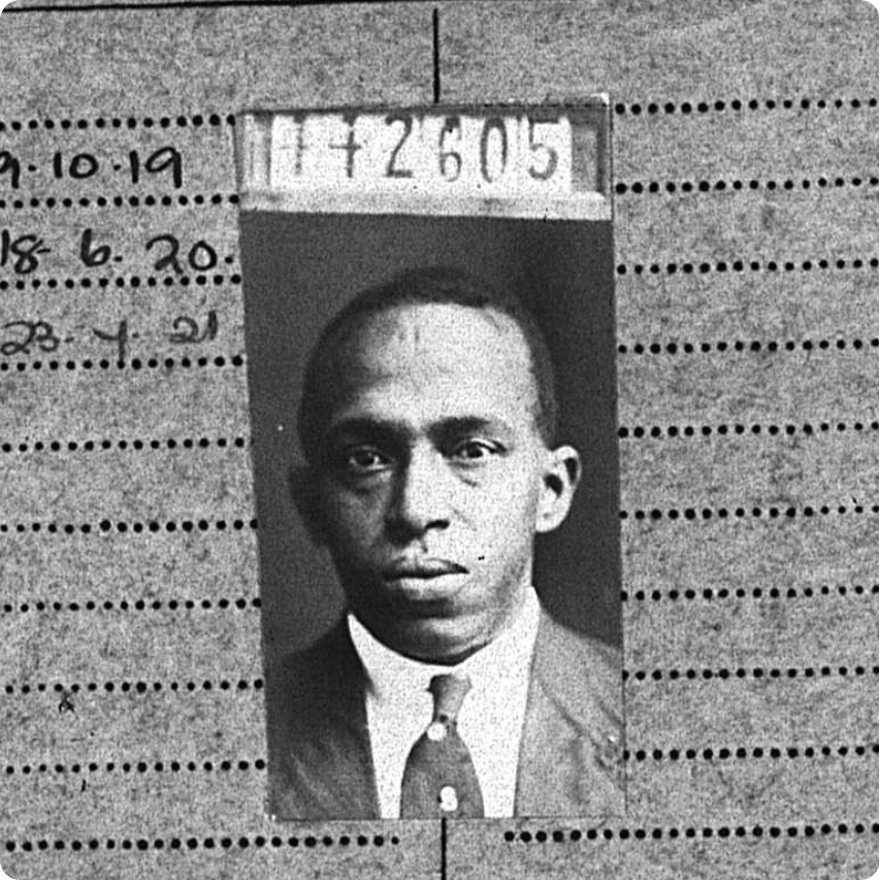
A photo of Amelia’s father from his Merchant Navy records, where he is consistently recorded as a ‘man of colour.’ Explore his records here.
By the time of the 1939 Register, which was taken on 29 September 1939 at the outbreak of World War Two, Amelia worked as a box maker. She was living with her parents and four siblings at 111 John Scurr House, Limehouse, Stepney.

Amelia King in the 1939 Register – view the full record here.
Racism in the Women's Land Army
Like many women keen to get to work during the war, Amelia volunteered to join the Women’s Land Army. These volunteers were placed on farms to keep the country fed, helping in the fields and with the livestock.
Founded during World War 1, the Women’s Land Army was restarted in July 1939 as war loomed, particularly as a peacetime conscription in April 1939 led to a shortage of farm workers.
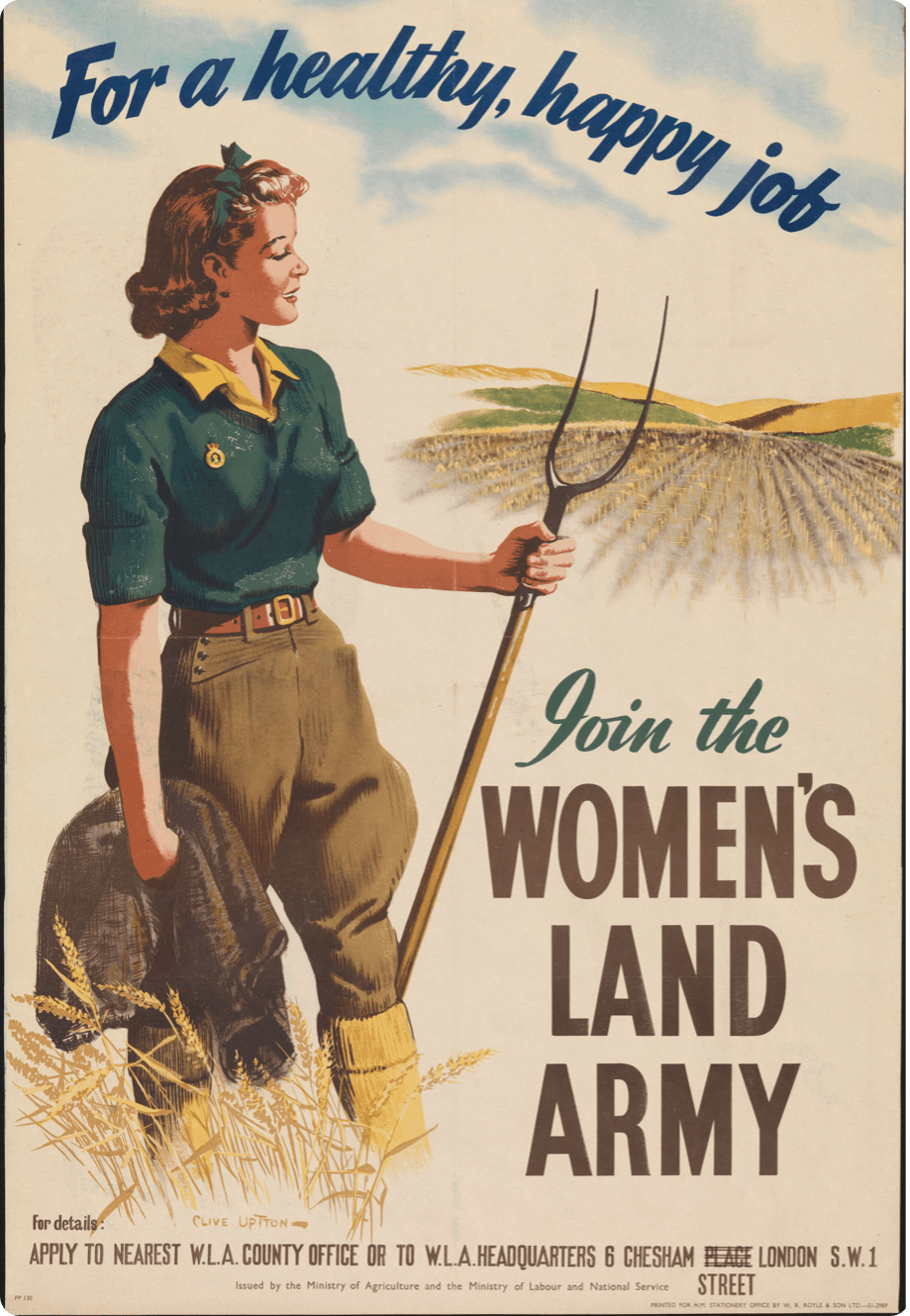
A poster recruiting for the Women’s Land Army in WW2. © IWM (Art.IWM PST 6078)
When Amelia applied to be a Land Girl, she was refused entry and instead recommended to report to a munitions factory.
Her local branch in Essex claimed it would be ‘difficult to place her’ and there would be ‘objections due to her ethnicity’.
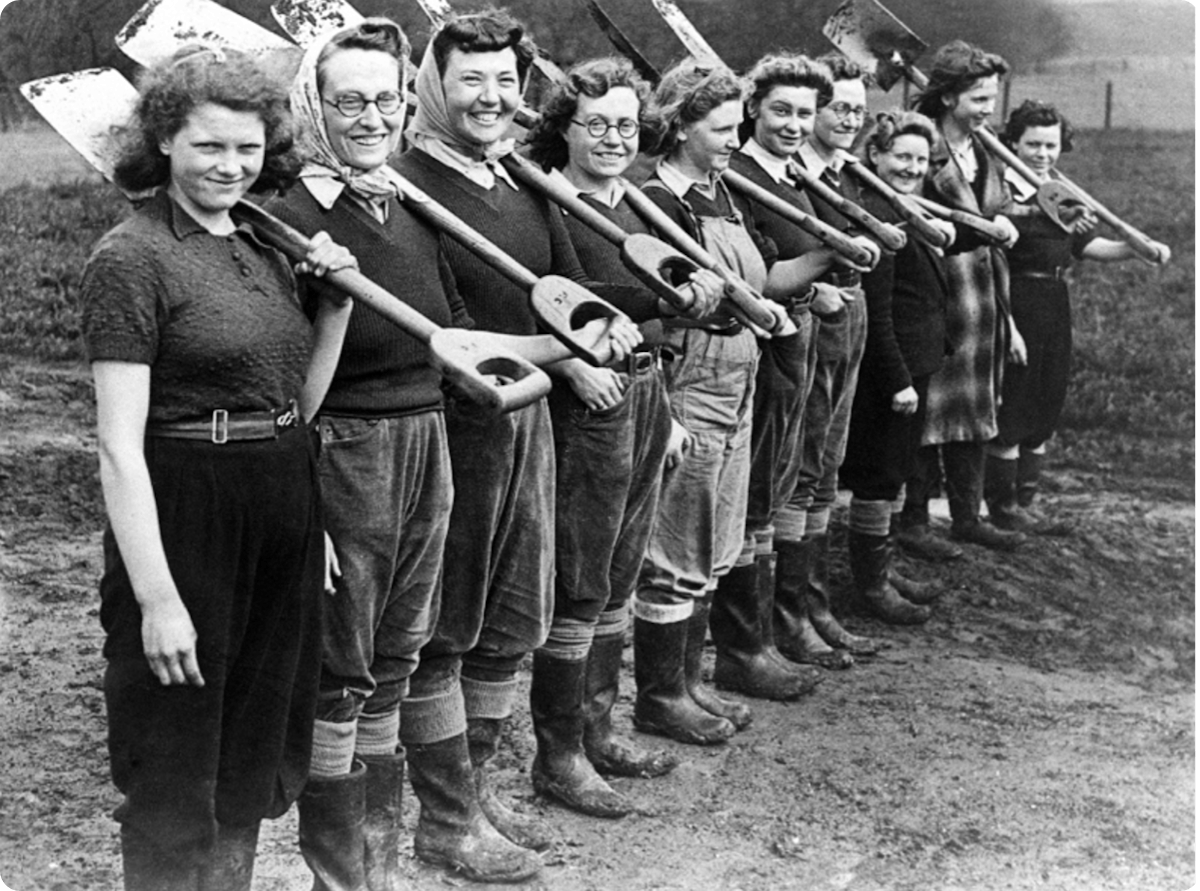
Women of the Women’s Land Army in Kielder Nursery in 1944, in the Findmypast Photo Collection.
But that wasn’t the end of her story.
Undeterred at this blatant racism and prejudice, Amelia turned to her local Labour Party MP, Walter Edwards, for help. She was not the first Black woman to attempt to join the Women’s Land Army, but she was still rejected.
In September of 1943, Amelia’s own words were reported in the Daily News:
"I said to them, if I’m not good enough to work on the land, then I am not good enough to make munitions. No one has ever suggested that my father and brother were not good enough to fight for the freedom of England."
Walter Edwards took King's case to the House of Commons.
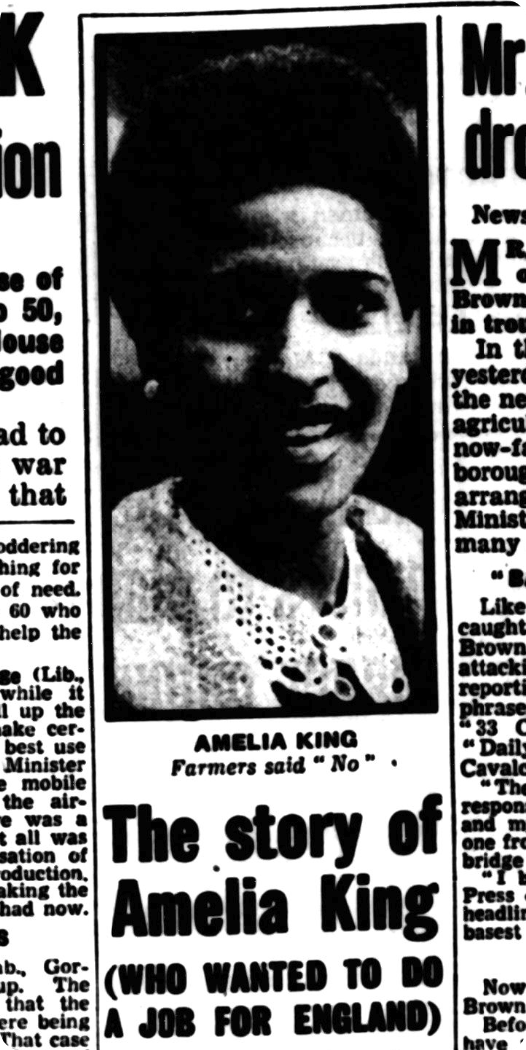
Amelia King pictured in the Daily News, 24 September 1943.
The debate in Parliament played out in the newspapers, with even Viscountess Astor taking part. An official of the Women’s Land Army had said that there was ‘no colour bar’ in the organisation, but that they ‘couldn’t take women they’d be unable to place’.
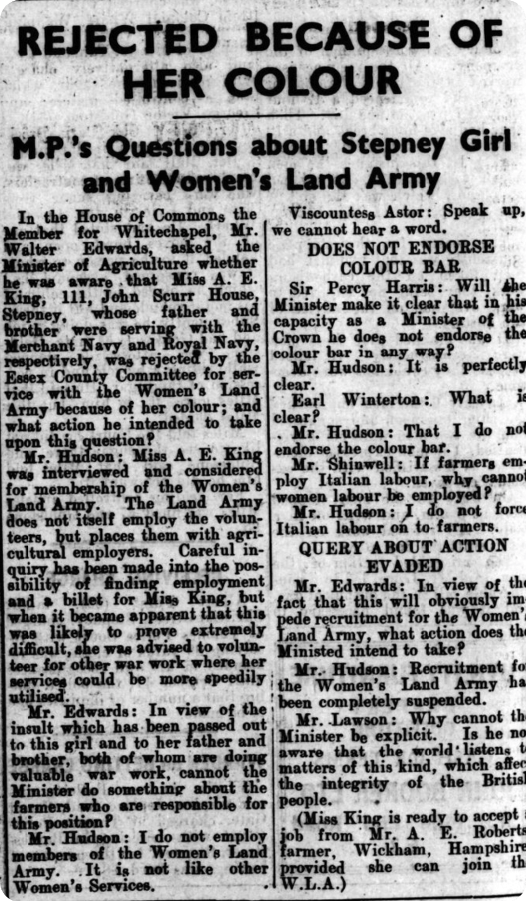
Amelia mentioned in the House of Commons, in East End News and London Shipping Chronicle, 1 October 1943.
It was a time of tense race relations – in the same week, cricketer Learie Constantine was denied entry into a London hotel because of this ‘colour bar’.
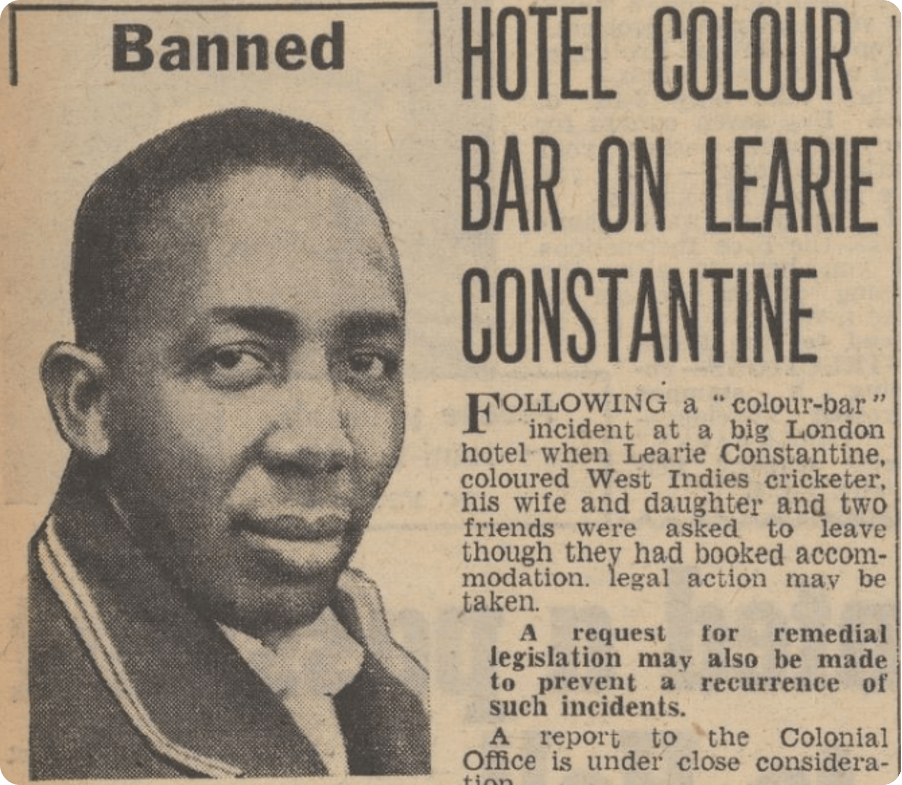
Cricketer Learie Constantine, pictured in the Daily Mirror, 3 September 1943.
Learie was later a lawyer, President of the League of Coloured Peoples, the first Trinidadian British High Commissioner in Britain, and influential in the passing of the 1965 Race Relations Act.
Taken together, both Amelia King and Learie Constantine's experiences of discrimination within the very same week exemplify the racism that was pervasive in Britain during the 1940s and 50s and beyond. Delve into more important stories with our Black History Hub.
Amelia joins the Women's Land Army
In October 1943, the decision to refuse Amelia’s entry into the Women’s Land Army was revoked.
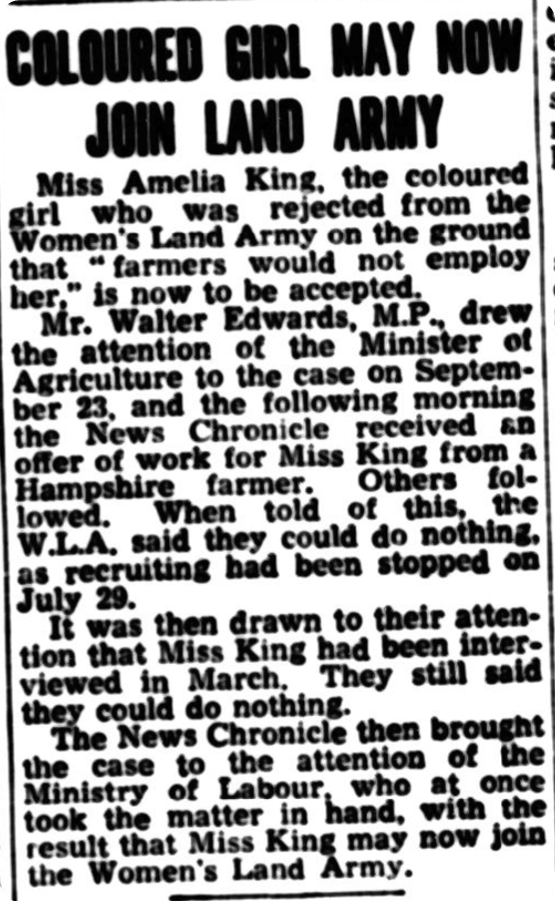
Amelia permitted to join the Women's Land Army, reported in the Daily News, 5 October 1943.
She was given a job at Frith Farm in Fareham, Hampshire by a farmer named Mr A.E. Roberts.

Other Land Girls were supportive of Amelia joining them, reported in the Daily News, 27 September 1943.
Mr Roberts had asked the other women who worked for him, who were ‘whole-heartedly prepared to welcome Miss King among them'.
The head of the Women’s Land Army, Lady Denham, said, ‘If we had to hawk a girl around the country it would be a rather undignified proceeding – and for her too. There is the matter of the girl’s feelings also'.
Amelia appears in our Women’s Land Army Service cards record set – we can find her address, her full date of birth, and her service number.
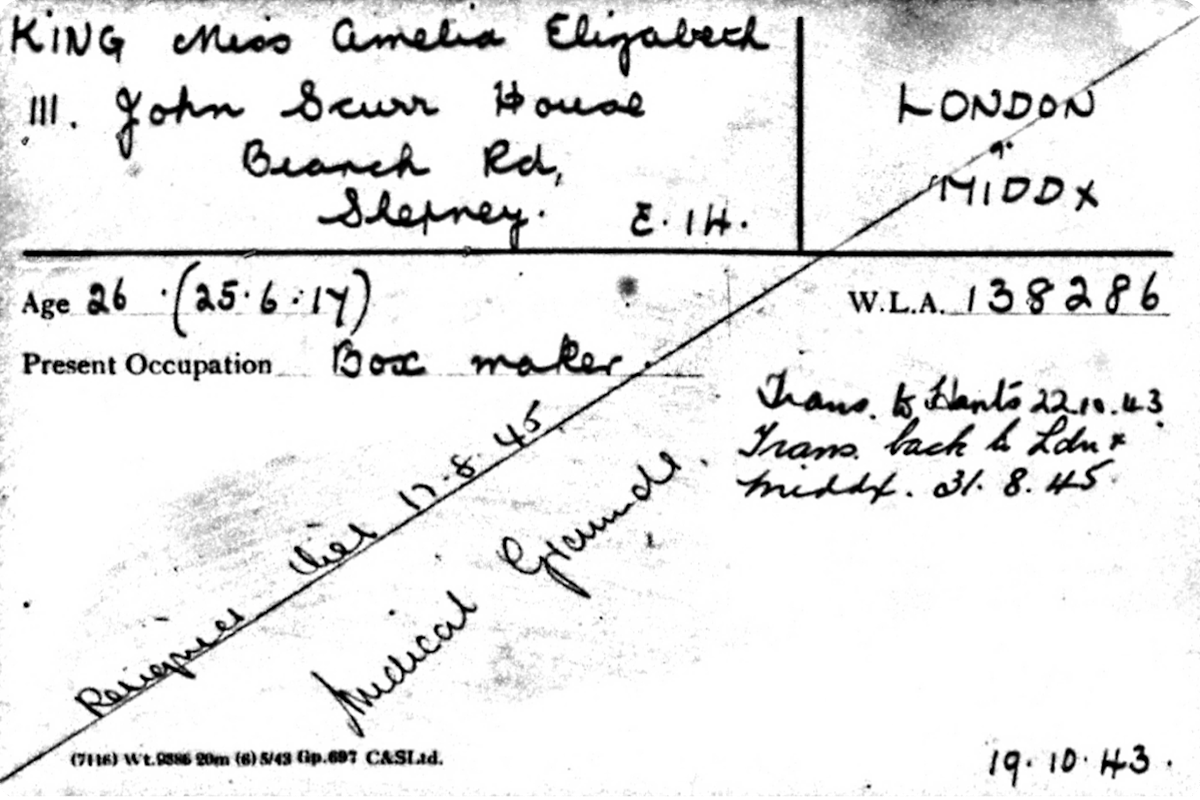
Amelia’s Women’s Land Army service record. You can view the record here.
We also learn that she worked from 22 October 1943 until 31 August 1945.
Amelia's determination to do her bit during World War 2 like her Merchant Navy father and Royal Navy brother, is inspiring. She overcame racism and prejudice, fighting for her place in the Women's Land Army. She served two years as a volunteer to help ensure Britain was fed during such difficult times. Amelia, we salute you.
We’re on a mission to ensure women like Amelia aren’t forgotten by history. She’s one of five women we shortlisted in a poll – we're commemorating the winner with a special plaque.
Be sure to head over to our Herstory Hub to learn more about these five inspirational women today.
The Women's Land Army during World War 2: FAQs
What jobs did the Women's Land Army do in World War 2?
With most male agricultural workers joining the military, farms needed women to provide a new rural workforce. They did a wide variety of jobs, working in all weathers and conditions, working anywhere in the country. Around a quarter of the women did dairy work, some worked as rat catchers, and others on land reclamation. There was even a specialist branch called the Timber Corps to prepare wood for pit props and telegraph poles.
Who could join the Women's Land Army?
Any physically fit, unmarried woman, who was over 17 and had no dependents, could join the Women's Land Army. They also needed to not already be working in reserved occupations vital to the war effort.
How many people were in the Women's Land Army?
At the peak of its work in 1944, the Women's Land Army had more than 80,000 women in its ranks.
How old did you have to be to join the Women's Land Army?
The minimum age to join was 17, but some women joined when they were younger.
Related articles recommended for you

'Their hunger will not allow them to continue': the victorious London dockers' strike of 1889
History Hub
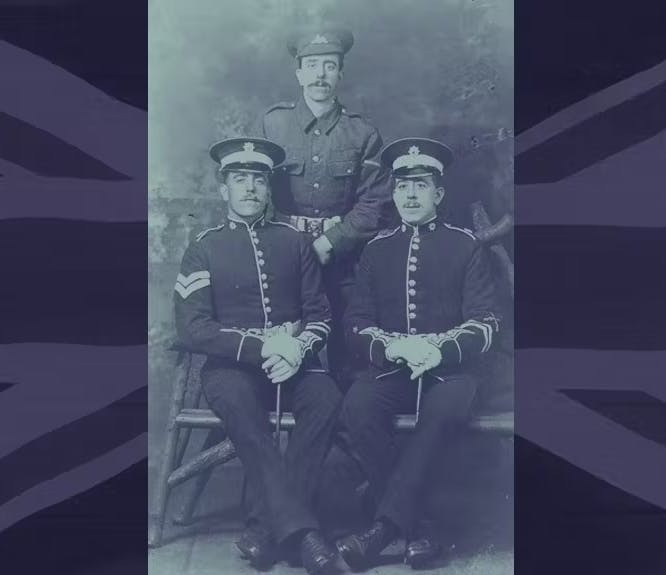
Five must-read books to discover more about the British Army during the First World War
History Hub
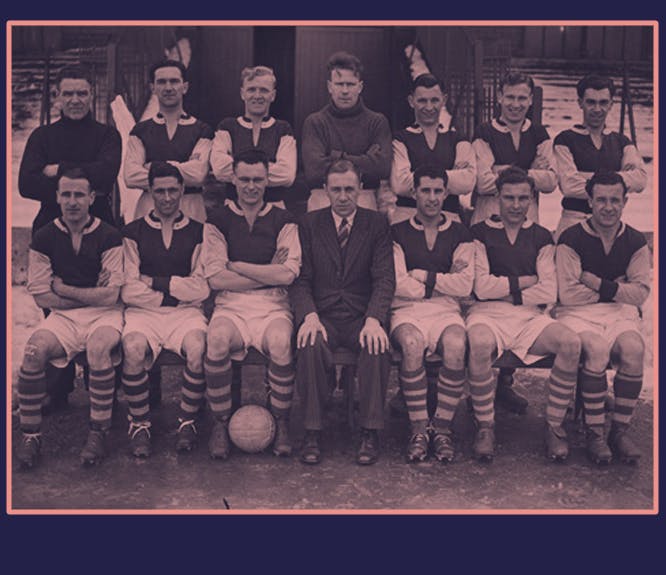
6 must-read books on the vast history of sport and football in Britain
Help Hub

